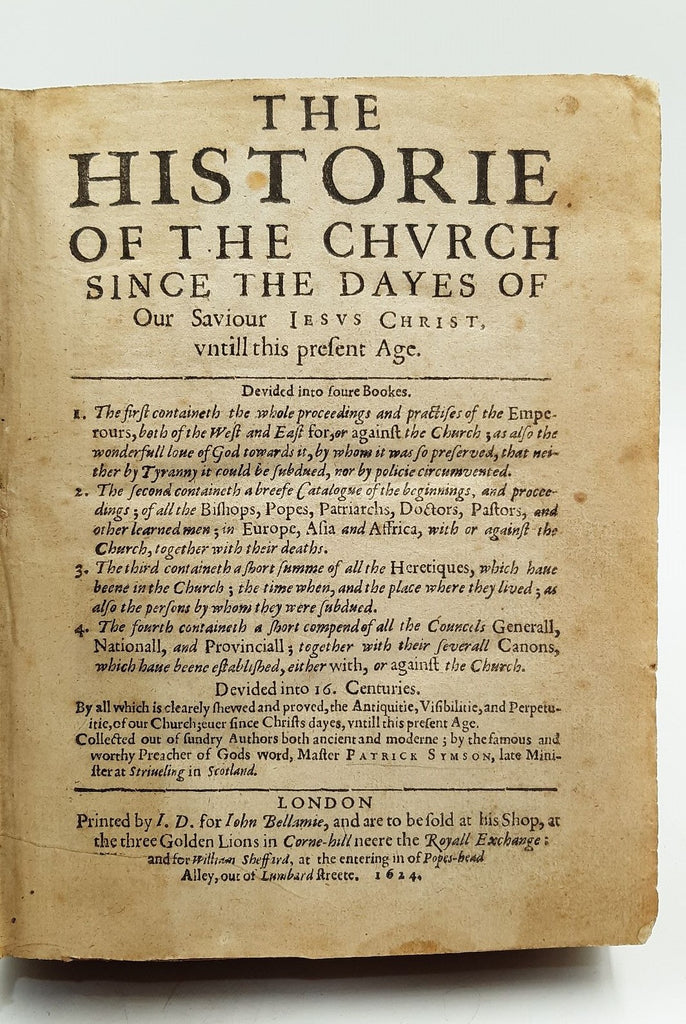The Historie of the Chvrch since the dayes of Our Saviour Jesvs Christ vntill this present Age.
SYMSON, Patrick




Devided into foure Bookes. 1. The first containeth the whole proceedings and practises of the emperours ... 2. The second containeth a breefe catalogue of the beginnings, and proceedings; of all the bishops, popes, patriarchs, doctors, pastors, and other learned men ... 3. The third containeth a short summe of all the heretiques ... 4. The fourth containeth a short compend of all the councels generall, nationall, and provinciall ... Devided into 16. centuries. ... Collected out of sundry authors both ancient and moderne; by the famous and worthy preacher of Gods word, Master Patrick Symson, late minister at Striueling in Scotland.
London: Printed by I[ohn]. D[awson] for Iohn Bellamie. 1624.
First edition thus. 8vo. 190x145mm. pp [8 leaves], 243, 246-438, 438-466, 468-770 (i.e. 700). Quarter calf, marbled paper covered boards, although the paper is almost completely lost from the lower board. Corners strengthened, some rubbing to upper cover but overall in nice condition. Internally very good save to some water staining in the first book. A nice copy of a scarce book. Rare in commerce.
Published posthumously (Patrick Symson died in 1618 aged 52), The Historie of the Church is a corrected and edited version of A Short Compend of the History of the first Ten Persecutions moved against Christians, (1613–16) and A Short Compend of the Growth of the Heresies of the Roman Anti-christ (1616). The Historie is divided thematically. The first part sets out the church’s relationship with secular rulers from Augustus Caesar to Elizabeth I. The second part deals with Bishops, Popes Patriarchs etc; the third part concerns heresy and heretics and the fourth is a history of church councils and ecclesiastical doctrines.
Symson (also Simson) was from an ecclesiastical family (his uncle was Archbishop of St Andrews and his father a Church of Scotland minister as well as a classics teacher). He became a minister himself in 1577 while continuing to teach Greek in his father’s school in Dunbar). Even though his uncle was his Archbishop, Symson was strongly opposed to the principle of episcopacy and even refused the offer of a bishopric. Despite these anti-establishment leanings, he was happy to accept an appointment in Stirling, a Royal residence which meant being presented to the King (James VI, later the First of England). Symson preached frequently to the King who, even if he did not always agree with his minister, admired his intellect and theological rigour, being a learned connoisseur of such matters. As well as being a brilliant scholar, Symson was a highly regarded parish minister with a strong pastoral vocation. He helped bring peace to the somewhat disorderly streets of Stirling and he always remained in the parish at times of plague, carrying out his even if it put his own life in danger. Unsurprisingly, Symson was described by an admirer as “a man learned, godly, and very faithfull in the cause of God”.
